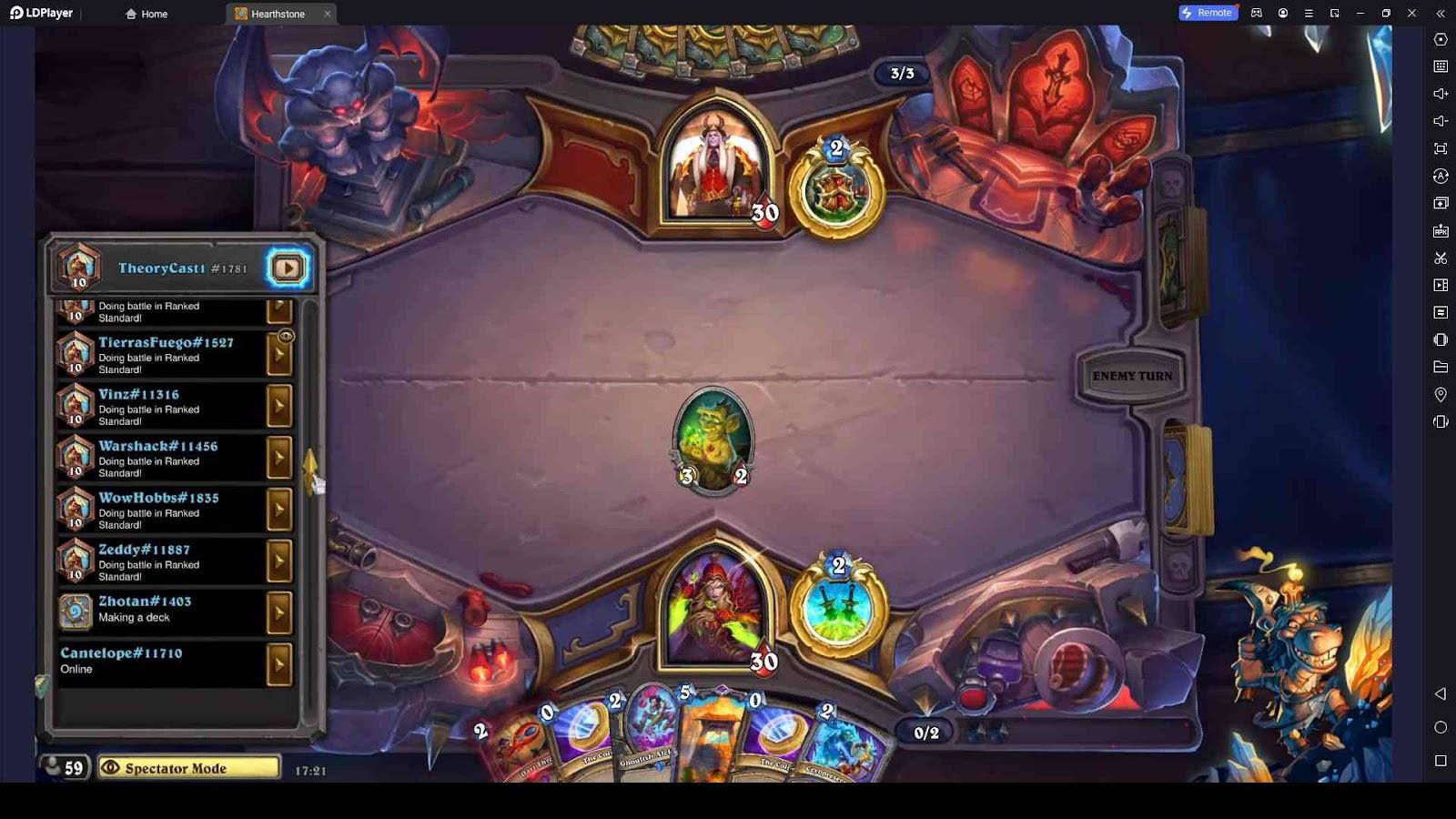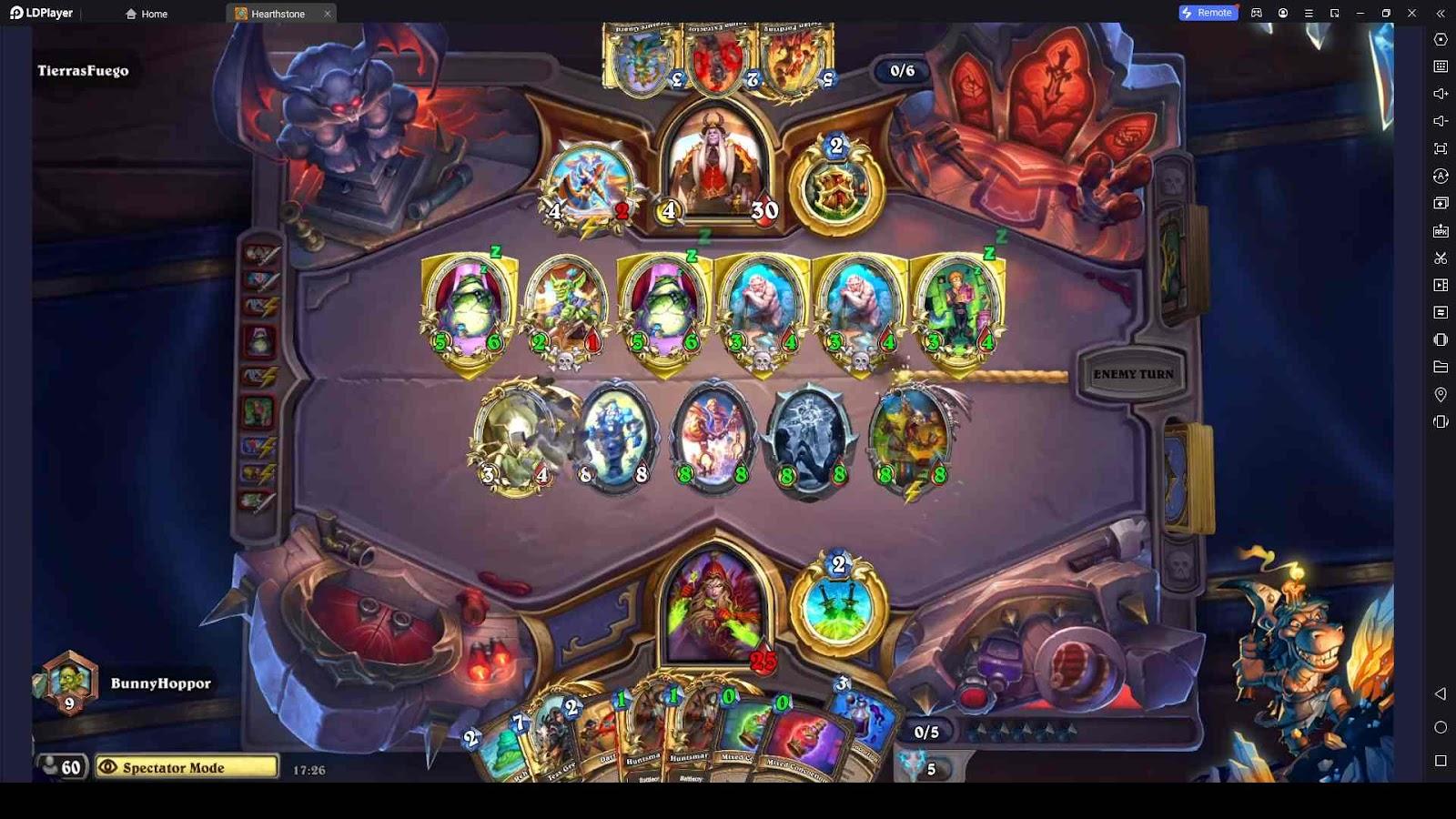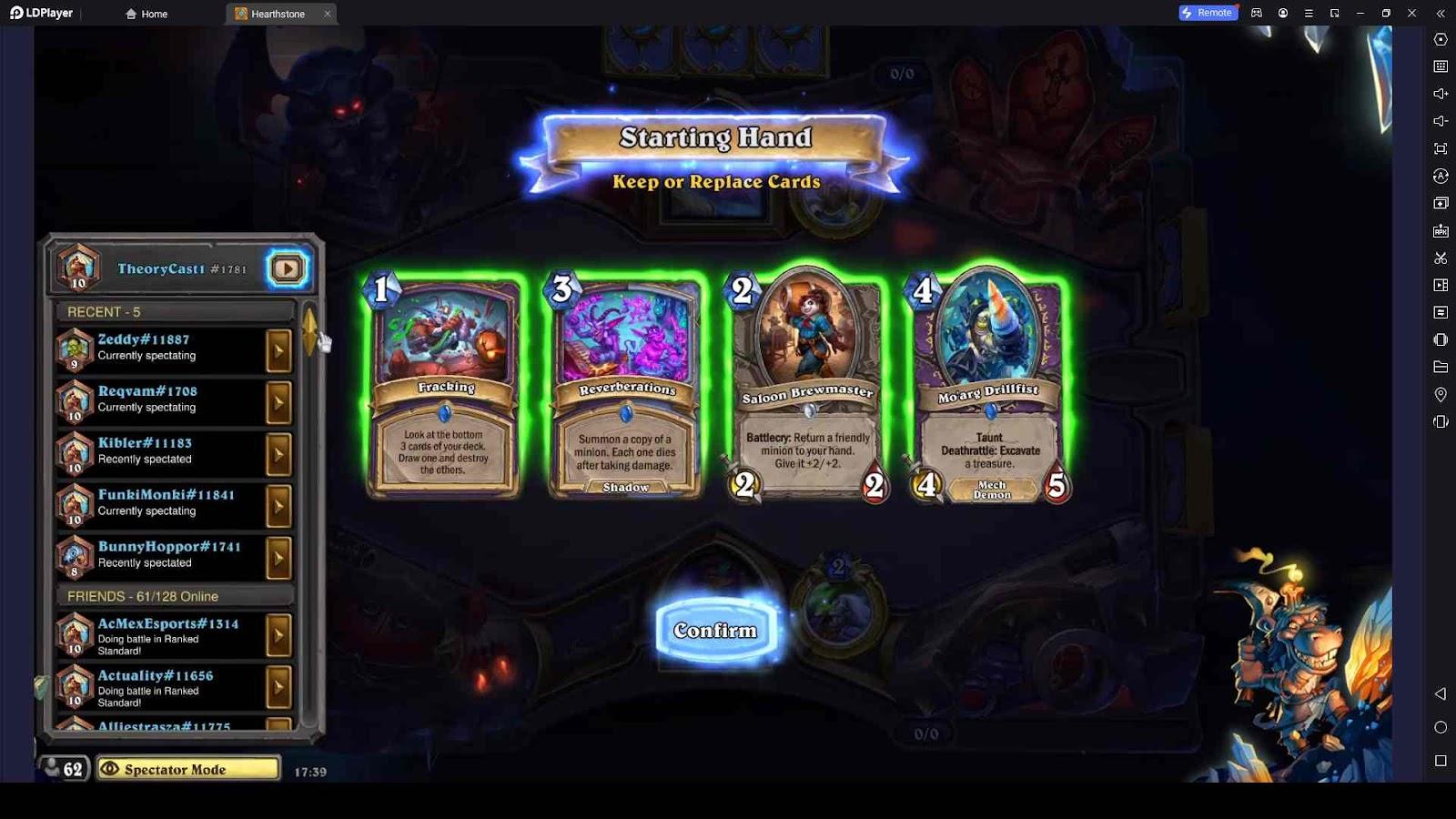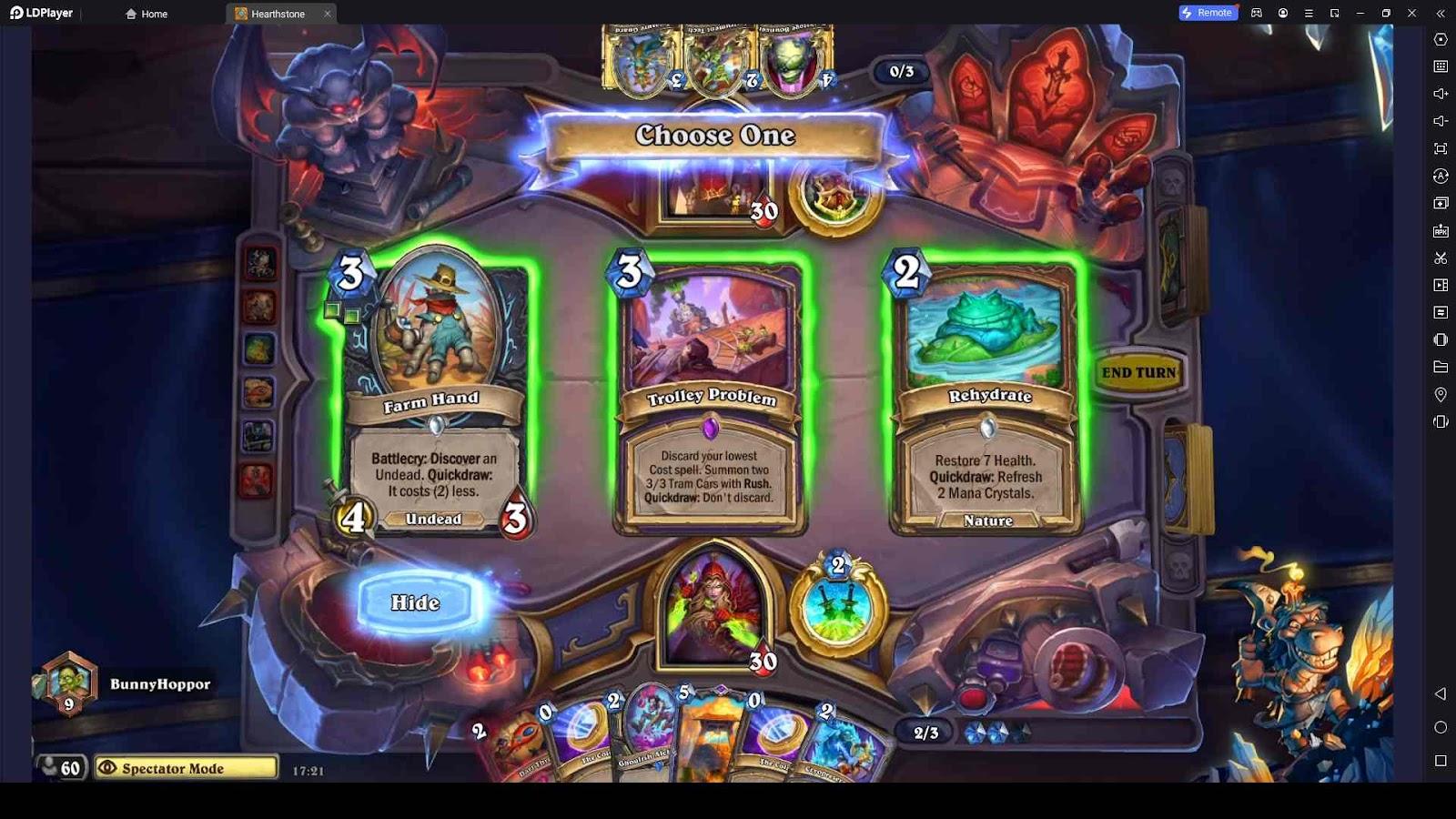Hearthstone: Showdown in the Badlands Beginner Guide - Best Tips for a First Time Player
2023-11-23
Hearthstone: Showdown in the Badlands is a spellbinding and free-to-play online card game that takes you into a world of strategic duels and magical encounters. In this captivating game, your ultimate objective is to reduce your opponent's Health to zero, employing the power of a carefully crafted 30-card deck. You get to experience the richness of diversity as you choose from 10 distinct classes, each bringing its own set of unique cards and hero powers to the table.
Table of Contents

Whether you're drawn to the fiery incantations of mages, the stealthy tactics of rogues, or the healing prowess of priests, the possibilities are vast. This variety allows you to tailor your decks to suit your preferred playstyle, offering a plethora of options to unleash creativity and devise winning strategies. The dynamic nature of Hearthstone extends beyond mere card-playing; it's a canvas where you paint your narrative of triumph and challenge. Every class becomes a canvas for your imagination, and every card is a brushstroke in the masterpiece of your deck.
If you're new to the game or looking to enhance your skills, you're in the right place. In this guide, we'll delve into the fundamentals, progression system, game modes, card acquisition, and strategies to craft effective decks. Experience the thrill of Hearthstone: Showdown in the Badlands on PC with enhanced graphics by playing it with LDPlayer. So, let's embark on this journey together!
Ranks and Progression
From the Start of the Hearthstone: Showdown in the Badlands, you'll go through different ranks. At first, you'll be in the apprentice ranks. Winning games gets you stars, and if you win a bunch in a row, you get even more stars. Three stars mean you move up a rank.

Once you hit Apprentice 1, you move to Bronze 10. This is a change because now if you lose a game, you lose stars too. But if you reach bronze 10, you won't drop back to apprentice ranks.
Getting to bronze is a shift from beginner to more normal ranks. It's like saying, "Okay, now it's getting serious." But hitting bronze 10 is good because you won't go back to apprentice.
Your goal? Reach the legendary rank. That's the top spot in Hearthstone. Climbing ranks isn't just about numbers; it's about getting better at the game. So, keep playing, keep winning, and aim for the legend!
Game Modes in Hearthstone
So, in Hearthstone: Showdown in the Badlands, you have a bunch of game modes to pick from. There's Wild, Classic, and Casual, but the big one is Standard. This is where things get interesting. In Standard, you can only use cards that came out in the last two years. It keeps the game fair and balanced.
Now, here's the cool part – every year, the developers drop a new set of cards in what they call expansions. The latest one is called Hearthstone: Showdown in the Badlands. These expansions shake things up by adding new cards to the mix. Imagine it like getting fresh ingredients for your deck recipe, making the game exciting and full of surprises.

To make your Hearthstone: Showdown in the Badlands decks strong, you need cards, and the magical currency for that is arcane dust. Think of it like gold, but specifically for crafting cards. So, how do you get this arcane dust? Well, one way is by opening card packs. But here's the problem– not every card in those packs is something you'd use. So, you can do a little magic called disenchanting. This process turns the cards you don't want into dust. Once you have enough dust, you can craft the cards you really want.
The other way you can earn cards is through the Hearthstone: Showdown in the Badlands Battle Pass. By completing daily and weekly quests, you earn experience points (XP) for the Battle Pass. As you gather enough XP, you level up and unlock rewards. It's like going on a treasure hunt, but instead of maps, you have quests. This not only makes collecting cards more exciting but also gives you a sense of achievement.
So, whether you're opening packs, turning unwanted cards into arcane dust, or going on quests with the Battle Pass, there are plenty of ways in Hearthstone: Showdown in the Badlands that you can use to fill your deck with the cards you need.
Game Modes Beyond Regular Play
So, beyond the usual matches, there's a bunch of cool game modes waiting for you. There's Tavern Brawl, where things get a bit crazy and change every week. Then, there's Battlegrounds – think of this Hearthstone: Showdown in the Badlands mode as a side game where you build a team and face off against others. It's neat because it's friendlier for players who don't want to spend much money.
Now, let's talk about Arena and Duels. These are modes where you pick cards to build a deck and battle against others. The trick is to keep winning until you get 12 victories or lose three times. The more you win, the better the rewards. It's like a challenge – how far can you go?
And there's another game mode called Mercenaries. It's a bit different from the other game modes, more like a standalone thing. You create a team, and it's all about turn-based combat. It's kind of like building your own little army.
Simplifying Cards and Gameplay
Alright, so in Hearthstone: Showdown in the Badlands, there are four main types of cards: Minions, Spells, Weapons, and Hero Cards.

Minions
Minions are like your team members. They have attack and health stats, and you use them to attack your opponent. Here are some examples of minions:
|
Name |
Attack |
Health |
Effect |
|
Chillwind Yeti |
4 |
5 |
None |
|
Murloc Tidecaller |
1 |
2 |
Whenever you summon a Murloc, gain +1 Attack. |
|
Bloodmage Thalnos |
1 |
1 |
Spell Damage +1. Deathrattle: Draw a card. |
Spells
Spells are like magical moves in Hearthstone: Showdown in the Badlands. They can do all sorts of things, like dealing damage or healing. Here are some examples of spells:
|
Name |
Cost |
Effect |
|
Fireball |
4 |
Deal 6 damage. |
|
Blessing of Kings |
4 |
Give a minion +4/+4. |
|
Shadow Word: Death |
3 |
Destroy a minion with 5 or more Attack. |
Weapons
Weapons are what your hero uses to attack. But be careful; using a weapon means your hero takes damage, too! Here are some examples of weapons:
|
Name |
Cost |
Attack |
Durability |
Effect |
|
Fiery War Axe |
2 |
3 |
2 |
None |
|
Truesilver Champion |
4 |
4 |
2 |
Whenever your hero attacks, restore 2 Health to it. |
|
Doomhammer |
5 |
2 |
8 |
Windfury, Overload: (2) |
Hero Cards
Hearthstone: Showdown in the Badlands Hero Cards are like leveling up. They change your hero and give you new powers. These cards can sometimes change the outcome of the whole battle. Here are some examples of hero cards:
|
Name |
Cost |
Effect |
|
Lord Jaraxxus |
9 |
Battlecry: Destroy your hero and replace it with Lord Jaraxxus. |
|
Deathstalker Rexxar |
6 |
Battlecry: Deal 2 damage to all enemy minions. |
|
Dr. Boom, Mad Genius |
7 |
Battlecry: For the rest of the game, your Mechs have Rush. |
Now, the real fun happens when you make these Hearthstone: Showdown in the Badlands cards work together. That's called synergy. It's like having a band where each member plays their part perfectly. When your cards work well together, your deck becomes powerful, and playing becomes a blast.
Minion Tribes and Spell Schools
When it comes to Minions, there are different groups, kind of like teams. Each team, or tribe, has its own style of playing. Let's take a look.
Minion Tribes
Beasts: These guys are all about offense. They usually have high attacks and will aid you in smacking opponents in the face.
King Krush
-
Cost: 9
-
Attack: 8
-
Health: 8
-
Charge
Demons: Powerful but not without a cost. Summoning demons might ask for some health or a bunch of mana. They bring a big punch but at a price.
Doomguard
-
Cost: 5
-
Attack: 5
-
Health: 7
-
Charge. Battlecry: Discard two random cards.
Dragons: Think big effects. Dragons usually have special powers that can turn the tide of the game. It's all about strategic moves.
Alexstrasza
-
Cost: 9
-
Attack: 8
-
Health: 8
-
Battlecry: Set a hero's remaining Health to 15.
Elementals: Timing is crucial here. You play an Elemental, and if you played one the turn before, you get a bonus effect.
Fire Plume Phoenix
-
Cost: 4
-
Attack: 3
-
Health: 3
-
Battlecry: If you played an Elemental last turn, deal 2 damage.
Mechs: Teamwork is key for Mechs. Having another Mech on your side gives you extra boosts.
Goblin Blastmage
-
Cost: 4
-
Attack: 5
-
Health: 4
-
Battlecry: If you have a Mech, deal 4 damage randomly split among all enemies.
Murlocs: Small but mighty in numbers. One Murloc might not be a big deal, but get a bunch on the board, and you can overwhelm your opponent.
Murloc Warleader
-
Cost: 3
-
Attack: 3
-
Health: 3
-
Your other Murlocs have +2/+1.
Nagas, Pirates, Quillboards, and Totems: Each of these has its own specialties, from gaining bonuses with spells to stealing cards or providing repeated effects. They add spice to the game.
-
Naga Sea Witch
-
Cost: 5
-
Attack: 5
-
Health: 5
-
Your cards cost (5).
-
-
Southsea Captain
-
Cost: 3
-
Attack: 3
-
Health: 3
-
Your other Pirates have +1/+1.
-
-
Bonker
-
Cost: 4
-
Attack: 3
-
Health: 7
-
-
Windfury: After this attack, gain 2 Blood Gems.
-
Mana Tide Totem
-
Cost: 3
-
Attack: 0
-
Health: 3
-
At the end of your turn, draw a card.
-
Spell Schools
Now, let's talk about spell schools. These are like different types of magic, each with its own vibe:
Arcane Spells: Think magical effects. They can deal direct damage or help you draw more cards.
-
Arcane Intellect
-
Cost: 3
-
Draw 2 cards.
Fell Spells: Demonic magic that lets you summon demons or deal damage. It's a bit dark but powerful.
-
Bane of Doom
-
Cost: 5
-
Deal 2 damage to a character. If that kills it, summon a random Demon.
Fire Spells: Explosive magic! These spells can cause huge area damage and target opponents directly.
-
Flamestrike
-
Cost: 7
-
Deal 4 damage to all enemy minions.
Frost Spells: Ice magic that freezes the board. Hit a target, and it misses its next attack. Tactical moves!
-
Frost Nova
-
Cost: 3
-
Freeze all enemy minions.
Holy Spells: Healing and buffing magic. Keep your minions health up and make them strong.
-
Holy Light
-
Cost: 2
-
Restore 6 Health.
Nature Spells: Connect with nature, summon animals, and heal wounds. It's like having a bit of the wild on your side.
-
Savannah Highmane
-
Cost: 6
-
Attack: 6
-
Health: 5
-
Deathrattle: Summon two 2/2 Hyenas.
Shadow Spells: Dark and mysterious. They deal damage, maybe heal you, and have effects on the board. Plus, they help you discover more cards.
-
Shadow Visions
-
Cost: 2
-
Discover a copy of a spell in your deck.
Hearthstone: Showdown in the Badlands Decks
Alright, so when it comes to Hearthstone: Showdown in the Badlands, decks fall into three main categories: aggro decks, midrange decks, and control decks. It's like a spectrum where, on one end, you've got decks wanting to win super fast (Aggro), and on the other end, you have decks wanting to outlast their opponents (Control). Mid-range decks are, you guessed it, in the middle – not too fast, not too slow. Let's dive into each:

Aggro Decks:
The goal of this Hearthstone: Showdown in the Badlands decks are speed. Aggro decks aim to rush down opponents before turn 10. They flood the board with low-cost minions, dealing damage right from the start. The key is to keep the board busy while hammering the opponent's face. Some common subtypes include Token and Zoo decks.
-
Token Decks: Wide board, buff minions with spells.
-
Zoo Decks: Play lots of low-cost minions to overwhelm opponents.
-
Aggro decks are popular among classes like Hunter, Druid, Warlock, and Warrior.
Control Decks:
Hearthstone: Showdown in the Badlands Control decks are the opposite. They want the game to last. They control the board, play top minions for good value, and often have healing or armor gain. The strategy is to survive early and then make big moves later. Subtypes include Big decks, Resurrection decks, and Fatigue decks.
-
Big Decks: Cheat out high-cost minions.
-
Resurrection Decks: Constantly bring back minions.
-
Fatigue Decks: Outlast opponents until they run out of cards.
-
Classes like Warrior, Priest, and Warlock shine with consistent control decks.
Mid-Range Decks:
Hearthstone: Showdown in the Badlands Midrange decks are all about balance. These decks apply constant pressure by playing a minion each turn. It's like a tempo dance, keeping the opponent on their toes. Tempo decks are a common subtype, focusing on playing a valuable card each turn.
-
Tempo Decks: Play a strong card each turn to keep up the pressure.
-
Most classes, including Shaman, Demon Hunter, Mage, and Paladin, can build effective midrange decks.
Combo and OTK Decks:
These Hearthstone: Showdown in the Badlands decks are a bit different. They fall into the control category because they aim to survive until they pull off their insane combo. However, some combos happen early, so they have their own special category. Combo decks do something cool, while OTK (One Turn Kill) decks aim to win in a single turn. Rogue, known for its combo elements, often falls into this category.
How to Beat Each Deck Archetype
When dealing with each deck, you have to remember it's like rock-paper-scissors. Aggro beats Control, Mid-Range beats Aggro, and Control beats Mid-Range. Each archetype has its strengths and weaknesses, creating a dynamic game.
Remember, it's a bit like rock-paper-scissors, so each archetype deck has its strengths and weaknesses. Now that you have a grasp of how they work, you're ready to delve deeper into the strategy of Hearthstone. As you get more comfortable in Hearthstone: Showdown in the Badlands, you can start understanding each deck's win conditions and play around them.
Conclusion
Hearthstone: Showdown in the Badlands is not just a game; it's an ever-evolving journey of strategy and excitement. Whether you're a newcomer or a seasoned player, the key to enjoying Hearthstone: Showdown in the Badlands is to explore, experiment, and most importantly, have fun. Thanks for joining us, and may your decks be ever in your favor!
